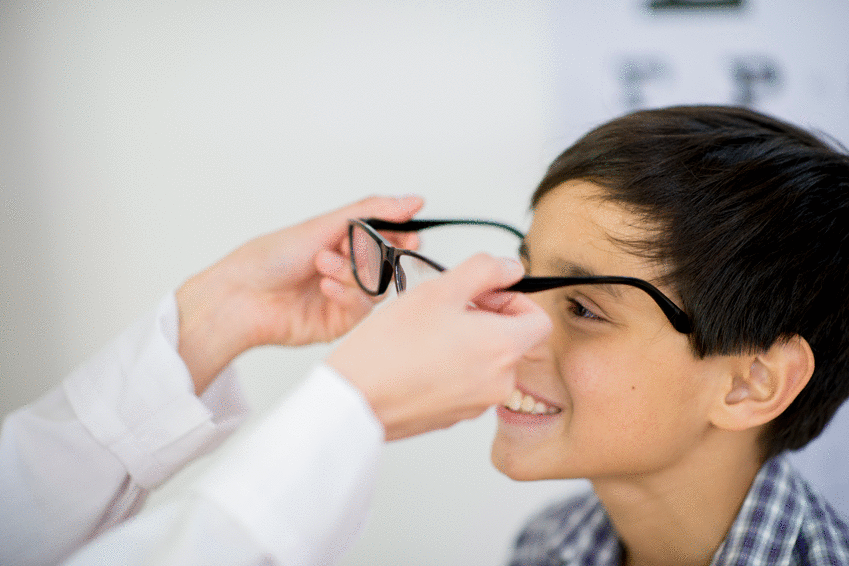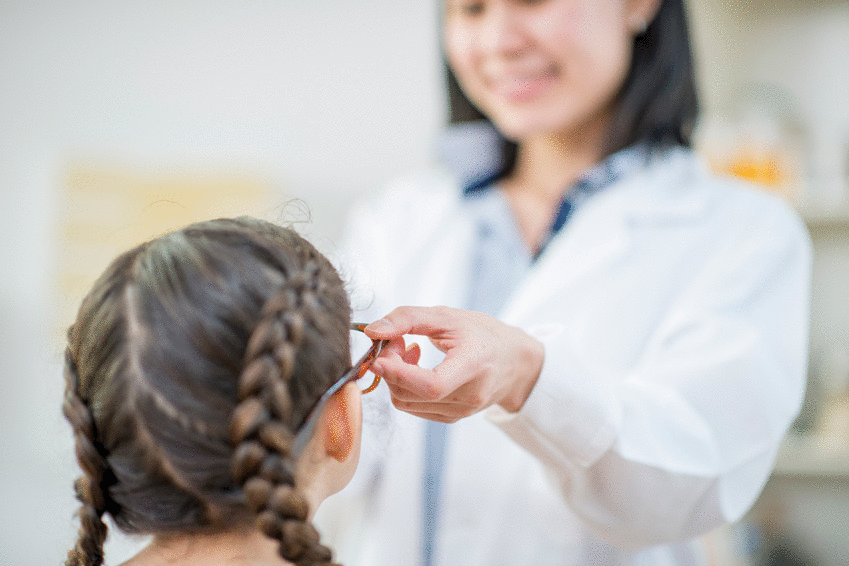For many parents, buying their kids eyeglasses for the first time may seem like a challenge. Striking a balance between what they want and what may be best for them can be grounds for a “scene” at the store.
Getting the prescription right through a trusted optometrist obviously comes first, but after that, it’s up to you and your child to pick out frames. It may seem confusing, but choosing the right glasses for kids is something you can definitely handle. Use this guide to help you through the process.
Fit First
When it comes to picking the right glasses for kids, the fit is by far the most important factor. As an adult, you may notice when your glasses don’t fit quite right, or they’re not working as intended. Your child, who has little or no experience wearing glasses, may not be able to vocalize these concerns even if something feels off to them.
Unlike pieces of clothing you buy for your child, you don’t want to think about room for growth when buying a pair of glasses. Glasses need to fit perfectly now, even if the child outgrows and needs to replace them in a year.

Find the Right Lens Width
Pay no attention to this child’s choice of frames! Lens width should be paramount when you’re shopping for glasses for kids. To find the right width, you’ll want to try different pairs of glasses on your child, bending down to check the lens at their eye level in the process. You’re looking to have your child’s eyes centered horizontally and vertically within the lens, which will allow the lenses to work effectively from all angles.
Once you find the right lens width for your child, make sure you take note of it. Many glasses have a lens width number on the inside of the frame, helping you to choose the right pair once you pick a style.
Frame Width
Frame width is an important factor when shopping for glasses for kids. A frame that is too tight will be uncomfortable, and a frame that is too loose will be slipping and sliding all the time.
The first thing to look at when choosing frame width is how the arm sits on the face. The arm should not touch the face until it reaches the ear, nor should there be excess space between the area where the arm meets the lens.
The path of the arm to the ear should also be straight. If the glasses seem to be moving out and away from the head, you likely need to go down in width. Glasses that appear pitched in toward the temple should likely be the next size up.
Remember, opticians can make minor width adjustments, but the basic “natural” fit of the frame should be correct for your child.

Bridge Fit
Once you find the appropriate lens and frame width, the bridge fit will line up naturally. When looking for glasses for kids, though, pay extra attention to this area. If the glasses don’t sit properly n the bridge of the nose, children won’t want to wear them for long.
Nose pads should fit firmly against the face with no air gaps. Likewise, your child shouldn’t feel like their glasses are pinching the nose area. Nose pads are often adjustable, so a pair that’s close when your child first tries them on can often be tailored to their needs.
Molded glasses and styles that do not feature nose pads cannot be adjusted or modified. For this reason, they must fit snugly but avoid pinching the nose area off the shelf.
Many glasses with a boxy fit have a narrow bridge, so these may not be ideal for very young children or those with broader faces.

Temple Check
Another area you need to check when fitting glasses for kids is the one around the temple. This area often gets ignored but is a vital part of getting the appropriate fit for a child.
If the arms of the glasses extends far past the ear, you likely need a smaller frame size. To test this, you can have your child lean his or her head against something or lie flat on their back. If the frames bump any surface in these positions, the frames are too large.
Ear pieces that have bent ends should also be checked. If the arms are too long, they will extend past the lobe of the ear, which will cause the frames to shift when your child is active – a smaller frame size is needed.
Consider Blue Light Coatings
Blue light, referred to technically as high-energy visible (HEV) light, is what many electronic devices use to make their screens clear and visible. From laptop computers to tablets and smartphones, blue light is almost everywhere.
An increasing amount of research is showing that too much exposure to blue light may be causing eye strain and long-term damage in some cases. Even two hours per day may strain the eyes and lead to issues down the road. Overexposure to blue light may also result in headaches, loss of sleep, dry eyes, and an increased risk of macular degeneration and cataracts later in life.
Older children and teenagers often use computers, smartphones and tablets regularly for social purposes and school work, both in the classroom and at home. Thanks to unique, anti-glare technology, coated lenses have been developed that can help filter this potentially harmful light.
Blue Protect lenses are designed for indoor use and are ideal for children in the classroom and doing their homework. These lenses do not filter UV light, however, so they will not work as sunglasses.
Don’t Forget About Fashion
When you’re shopping for glasses for kids, you might find that your choices are somewhat limited regarding style, especially when compared with adult options. While it’s true that there usually aren’t a lot of styles for children available, you shouldn’t have to ignore fashion completely.
Talk to your child about what styles they like best and allow them to try a few different glasses once you have the right size. Including them in the process can make it easier to find a pair of glasses that your child will like wearing.
[arve url=”https://res.cloudinary.com/mcsvideoc3/video/upload/v1528466671/proper-eyeglasses-fit-kids.mp4″ autoplay=”yes” controls=”yes” muted=”yes” loop=”yes” play_icon_style=”none” mode=”lazyload”]
Ask for Help
Picking the right glasses for kids can be an involved process. Don’t be afraid to get help from an optometrist or a skilled professional where you’re shopping for glasses..
Don’t be afraid to ask for help when searching for the right fit for your child. Personal preference matters, but when it comes to your child’s vision, getting the correct fit and optical clarity trumps everything.





